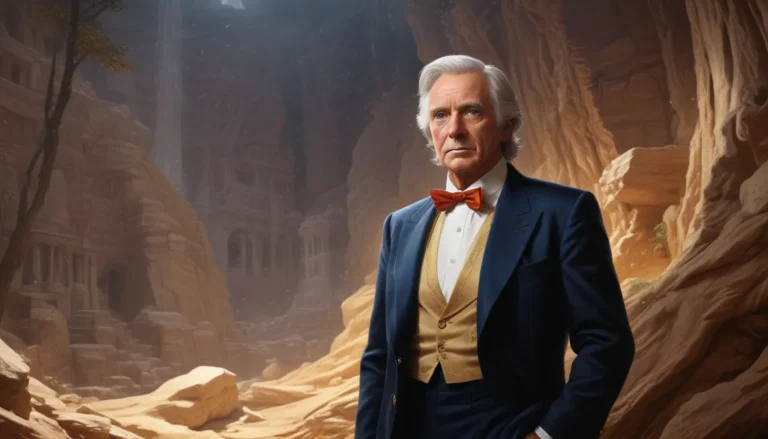The images in our articles may not match the content exactly. They are used to grab your attention, not to show the exact details in the text. The images complement the text but do not replace it.
Nur Muhammad Taraki, also known as Taraki, was a pivotal figure in Afghanistan’s political landscape during the late 20th century. His leadership, marked by ambitious reforms and contentious policies, left a lasting impact on the country’s social, economic, and political trajectory. In this article, we delve into 14 fascinating facts about Nur Muhammad Taraki, shedding light on his early life, political career, and the legacy he left behind.
Exploring Nur Muhammad Taraki’s Early Life and Education
Nur Muhammad Taraki was born on July 15, 1917, in Kabul, Afghanistan. He pursued studies in law and journalism at Kabul University, where his passion for political activism and socialism blossomed. This educational background played a crucial role in shaping Taraki’s political ideology and future leadership.
The Founding of the People’s Democratic Party of Afghanistan
Taraki’s involvement in founding the People’s Democratic Party of Afghanistan (PDPA) solidified his position as a key figure in the country’s political landscape. As a socialist political party, the PDPA aimed to bring about social and economic reforms that would modernize Afghanistan and reduce inequality.
Taraki’s Political Philosophy and Vision
Embracing Marxist-Leninist ideology, Taraki advocated for socialism and equality, envisioning a society built on principles of collective ownership and social justice. His vision for Afghanistan resonated with those seeking progressive change and a more equitable society.
The Saur Revolution and Rise to Power
In 1978, Taraki led the Saur Revolution, overthrowing the government of President Mohammad Daoud Khan and assuming the role of President of Afghanistan. This marked the beginning of a period of intense revolution and socialist policies that aimed to transform the country.
Implementing Ambitious Reforms
Taraki’s government wasted no time in implementing sweeping reforms, including land redistribution, women’s rights initiatives, and educational programs. These reforms were aimed at modernizing Afghanistan and fostering a more egalitarian society.
Challenges and Soviet Intervention
Despite his efforts, Taraki faced significant challenges, including a struggling economy and opposition from conservative factions within Afghanistan. In 1979, the Soviet Union intervened to support Taraki’s government, marking the beginning of a turbulent period in the region.
Facing Growing Opposition and Assassination
Taraki’s government faced mounting opposition from tribal groups and Islamist insurgents, leading to his eventual downfall in a coup orchestrated by his political rival, Hafizullah Amin. Taraki’s assassination in 1979 remains a subject of debate and speculation, underscoring the volatility of the political landscape at the time.
Reflecting on Nur Muhammad Taraki’s Legacy and Impact
Taraki’s presidency, although brief, left a profound impact on Afghanistan’s political history. His reforms, while short-lived, laid the foundation for future developments in the country. Taraki’s vision for socialism and equality continues to shape discussions on Afghan politics and society.
The Taraki Mausoleum and Controversial Legacy
To honor his contributions, a mausoleum was built in Kabul as a tribute to Taraki’s role in shaping Afghanistan’s political history. However, his legacy remains contentious, with differing opinions on his leadership and policies. While some view him as a visionary leader, others criticize his authoritarian tendencies.
Understanding Taraki in Historical Context
Examining Taraki’s role within the broader historical context of Afghanistan is essential for comprehending the complexities that have shaped the country’s trajectory. His presidency and the era in which he lived serve as critical chapters in Afghanistan’s intricate history.
In conclusion, Nur Muhammad Taraki’s legacy as a dynamic and influential figure in Afghan history continues to be debated and analyzed. His commitment to socialist ideals, coupled with the controversies surrounding his leadership, has left a lasting impact on Afghanistan’s political landscape. As the country navigates through ongoing challenges, Taraki’s legacy serves as a reminder of the complexities and nuances that define Afghanistan’s history.
FAQs about Nur Muhammad Taraki
Q: Who was Nur Muhammad Taraki?
A: Nur Muhammad Taraki was a prominent Afghan leader, a founder of the People’s Democratic Party of Afghanistan, and the President of the Revolutionary Council from 1978 to 1979.
Q: What were his political beliefs?
A: Taraki was a Marxist and socialist who advocated for revolutionary transformation and implemented radical reforms during his presidency.
Q: What was the significance of Taraki’s leadership?
A: Taraki’s leadership marked a period of intense revolution and socialist policies that reshaped Afghanistan’s political landscape in the late 1970s.
Q: What were some criticisms against Taraki?
A: Taraki faced criticism for alleged human rights violations and the authoritarian nature of his regime. His suppression of dissent and use of violence to maintain power were among the key criticisms.
Q: How did Taraki’s leadership come to an end?
A: Taraki’s presidency was cut short when he was assassinated in 1979 in a coup orchestrated by members of his own government, with Soviet involvement.
Q: What is Taraki’s lasting legacy?
A: Taraki’s legacy is the subject of ongoing debate. While some view him as a champion of social justice and revolutionary ideals, others see him as a symbol of authoritarianism and a catalyst for Afghanistan’s subsequent instability.
Unravel the intriguing story of Nur Muhammad Taraki and his impactful role in Afghan history. As you delve into his life and leadership, gain a deeper understanding of the complexities that have shaped Afghanistan’s past and present. Join us on a journey through history as we explore the legacy of this remarkable figure.






